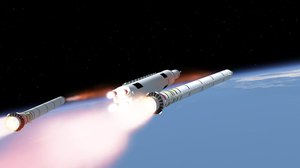
About this course:
Rocket Propulsion
Description:
ME 554 Rocket Propulsion (3-0-0-6)
Classification of rockets – chemical, electrical and nuclear; Applications of rockets in launch vehicles, spacecraft, and missiles; Criteria of performance – thrust, specific impulse, energy and efficiencies, characteristic velocity, effective exhaust velocity; Isentropic flow through nozzles, nozzle configurations, real nozzles; Flight performance of rocket vehicles; Trajectories and orbits; Solid rocket motors, double-base and composite propellants, grain configurations, erosive burning; Liquid rocket engines, types of propellants; cryogenic and gelled propellants, injector design, gas pressure and turbo-pump feed systems, combustion instability; Heat transfer analysis; Thrust vector control; Hybrid rocket engines; Electrothermal, ion and magnetoplasma rockets; Rocket testing.
References
[1] G. P. Sutton and O. Biblarz, Rocket Propulsion Elements, Wiley, 2001.
[2] P. M. Sforza, Theory of Aerospace Propulsion, Elsevier-BH, 2017
[3] T. A. Ward, Aerospace Propulsion Systems, Wiley, 2010.
[4] J. J. Sellers, Understanding Space: An Introduction to Astronautics, McGraw Hill, 2005.
[5] R. W. Humble, G. N. Henry, W. J. Larson, Space Propulsion Analysis and Design, McGraw Hill, 1995.
[6] G. C. Oates, Aerothermodynamics of Gas Turbine and Rocket Propulsion, American Institute of Aeronautics and Astronautics (AIAA) Education Series, 1988.
[7] M. L. Turner, Rocket and Spacecraft Propulsion, Springer, 2009.
[8] D. K. Huzel, and D. H. Huang, Design of Liquid Propellant Rocket Engines, Progress in American Institute of Aeronautics and Astronautics (AIAA), 1992.
[9] P. G. Hill, and C. R. Peterson, Mechanics and Thermodynamics of Propulsion, Addison Wesley, 1965.